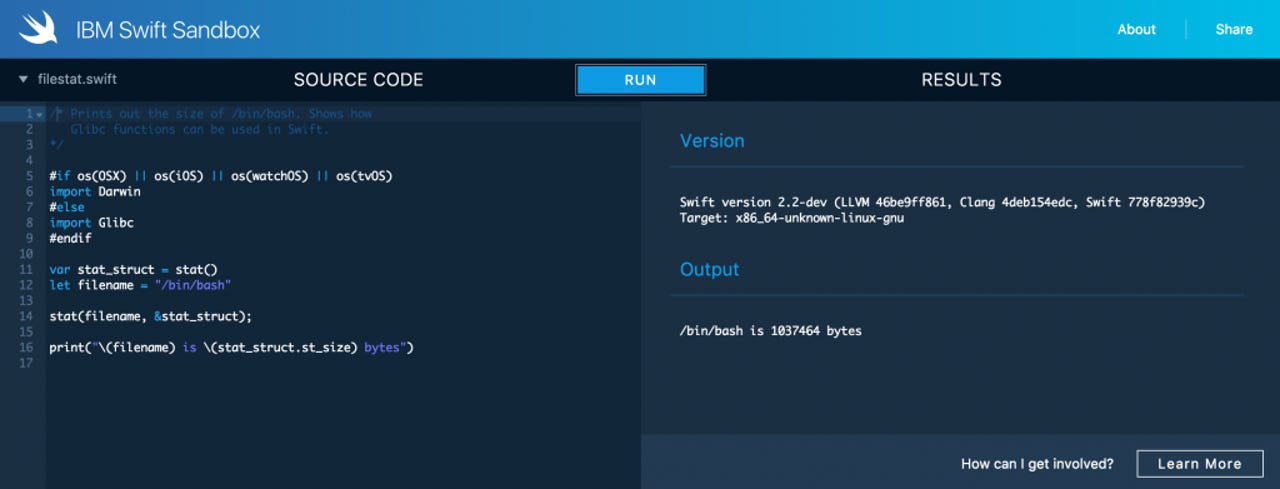After Apple open sources it, IBM puts Swift programming in the cloud


That didn't take long: As soon as Apple released its Swift programming language to the open source community, IBM created a way to code with Swift in the cloud.
Big Blue released its IBM Swift Sandbox that runs your Swift code on a Linux server using a Docker container.
No, you're not going to create the next big Swift program in the Sandbox, but for those wanting to get their feet wet with Apple's newest object oriented programming language, the IBM Swift Sandbox is worth the look.
And it underscores IBM's continued partnership with Apple.
The company is on-board to create enterprise apps for iOS devices and is already saving thousands of dollars in support costs by deploying Apple hardware within its own ranks. IBM says "we love swift here" so I'd expect the company to highlight additional Swift implementations in the future, helping Apple further its cause to make Swift a go-to language for modern app development.
Perhaps best of all, by putting a Swift environment in the cloud, you can use the language on any device running a modern browser.
I whipped a few lines of code together in Safari on the iPad Pro - my full time computing device - and was able to run them without a problem or any lag. The text editor highlights common code errors just as you'd expect in an Integrated Development Environment or code creation tool.
That's super useful in a classroom setting where students can tinker with Swift to learn app development.
Will Swift gain traction to challenge Java and other popular languages?
While Apple might hope so, it's too early to say. But with backing from IBM and other big names in the computing industry, it's possible. And that would be a big step for Apple, which typically keeps its software technologies close at hand.